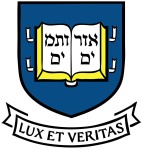 Anger over the tuition increase at the University of California erupted into several protests and resulted in numerous arrests last week. Protesters used tactics that included throwing incendiary devices at police cars, vandalizing the home of the chancellor of University of California, and breaking in and barricading themselves inside university buildings.
Anger over the tuition increase at the University of California erupted into several protests and resulted in numerous arrests last week. Protesters used tactics that included throwing incendiary devices at police cars, vandalizing the home of the chancellor of University of California, and breaking in and barricading themselves inside university buildings.
Given that students are so angry, how much money do they actually have to spend more per year? The University of California website “estimated” pre-increase 2009-2010 tuition to be $8,700 and uniform across all campuses, while the Yahoo Financial website reported that pre-increase 2008-2009 tuition and fee to be about $8,932 per year for Berkeley students. (Both figures exclude costs of books and living expenses, which are not affected by the tuition increase.)
Post tuition-increase, in-state students will pay $10,302 per year, so the increase comes out to be about $2,500 – $2,700 per student. Given that about 1/3 of the tuition hike is going towards financial aid, the actual costs for low-income students may be much lower.
Post-tuition-increase, University of California will be one of the more expensive public schools in the U.S., but not the most expensive by a long stretch. The tuition for the University of Vermont, for example, comes at a hefty $13,554 per year. University of Pittsburgh, another one of the most expensive public universities in the U.S., charges in-state students $13,344 per year. Pennsylvania State University (College Park) charge in-state students between $13,014 to $14,904 per year, depending on their year in school. Indeed, many other public universities have already been more expensive than the current sticker price of the University of California for several years now.
The University of Vermont created a somewhat defensive but helpful chart that compares some university costs. As you can see, pre-tuition-hike, University of California was one of the least expensive public universities. Given its stature and reputation, not just among public universities but among all universities, the students in California was getting an incredible bargain.
Post-tuition-hike, the University of California is certainly less of a bargain than before, but it is still a good value compared to other public universities. It is an extremely good value compared to private colleges and universities that cost three or four times as much.
The pre-tuition-hike University of California was so much of a bargain that Ian Ayres, professor of law and economics at Yale, wrote shortly after the increase that he believe that the UC tuition increase was a good thing. The problem with public universities, wrote Professor Ayres, was not that they cost too much for the poor, but that they charge the rich too little.
In other words, the University of California was under-charging those who have no problem affording a more expensive education, and not using enough of its funds to subsidize those who cannot afford the education without a lot of financial aid. If the goal was to provide education for all who is willing and deserving, it would make sense to the charge the rich more and use that increased tuition to simultaneously increase fianncial aid for low-income students.
Indeed, the agitation over $2,500 seems like a lot of sound and fury over very little. But the anger reflects a legitimate concern as well. After all, the tuition hike at the University of California reflected not a concern for equity but a darker trend — the floundering economy and the subsequent hefty budget cuts that must then be made up by increased tuition. The president of UC-Berkeley noted that the UC system received only half as much funding per student as it did in 1990. He also spoke of his fear, not at all unfounded, of a “exodus of faculty” from the cash-strapped school for greener pastures.
Still, all the anger (and violence) seem completely misdirected. The responsibility for the budget shortfall seems to lie more with the legislature and the governor, the decision makers who actually cut the funding, rather than the chancellor, who was merely one among the twenty trustees who voted for the tuition hike. Perhaps, rather than occupying school buildings, disrupting class, and committing petty vandalism on private property, the protesters should direct their anger towards Sacramento and use that energy to engage with, and reform, the political process.
Filed under: higher education, public education, state universities, tuition and financial aid | Tagged: most expensive public university, public university costs, tuition increase, UC protests, UC tuition hike, University of California | Leave a comment »






 This is no small potatoes. The NSF, with a budge of over $6 billion, funds about 20 percent of all federally supported research at American colleges and universities. Though political science research would presumably continue, it would no doubt take a hit if Coburn’s proposal is approved. A $9 million hit, to be exact.
This is no small potatoes. The NSF, with a budge of over $6 billion, funds about 20 percent of all federally supported research at American colleges and universities. Though political science research would presumably continue, it would no doubt take a hit if Coburn’s proposal is approved. A $9 million hit, to be exact.